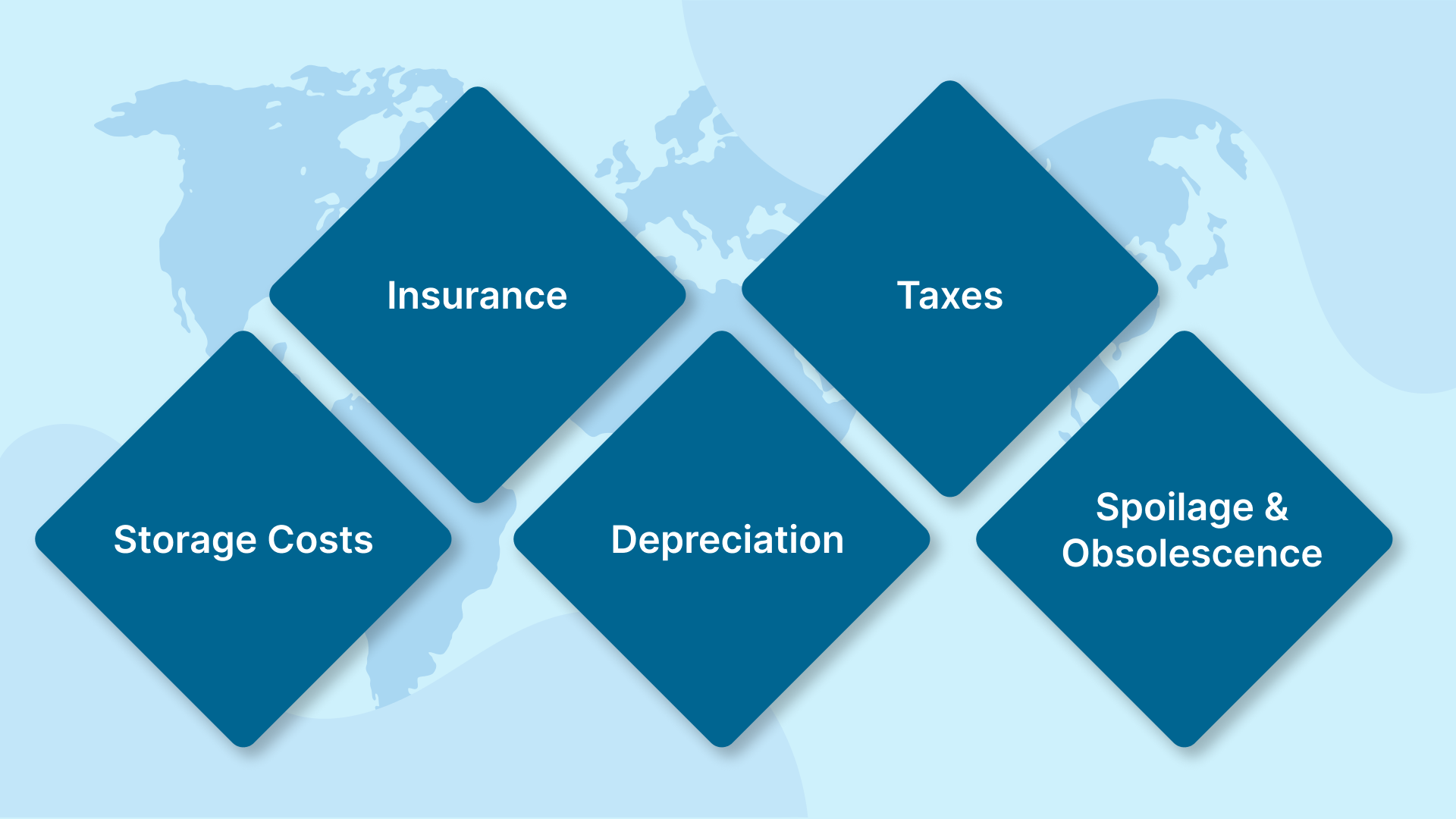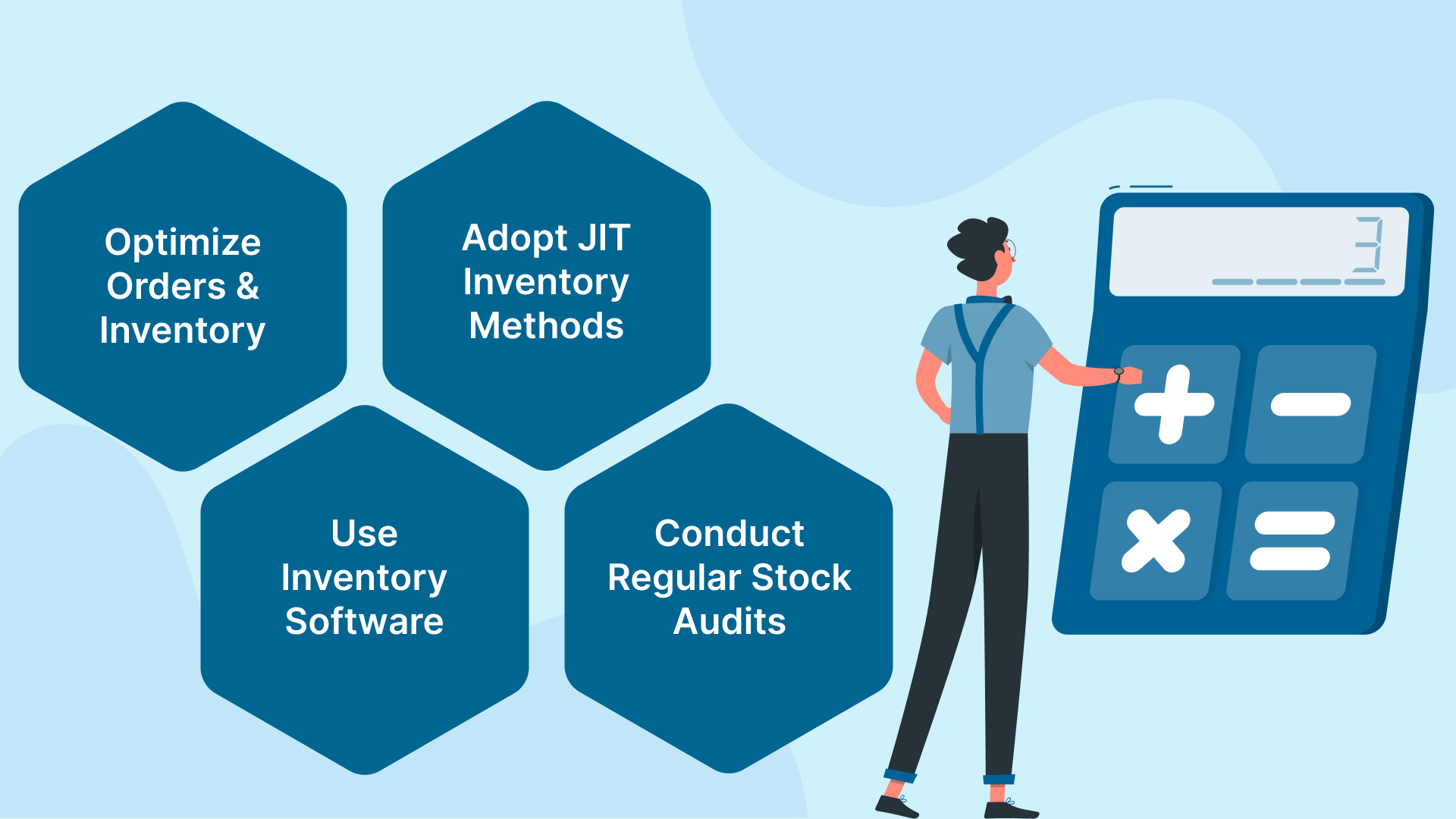Inventory costs can quietly eat into your profits. This is especially when it comes to holding costs. In the Philippines, holding costs usually take up about 20% to 30% of your total inventory value every year. While this aligns with global standards, local challenges like logistics delays and storage inefficiencies can push these costs even higher.
If you’re running a business that keeps stock retail, manufacturing, or e-commerce, understanding exactly how much it costs to hold your inventory is essential.
It helps you make smarter decisions about how much to order, when to reorder, and how to balance supply with demand without letting your cash flow suffer.
In this guide, we will break down the holding cost formula, explain its components, and provide an easy-to-follow calculation method. You will get practical insights on managing these costs to protect your bottom line and keep your operations running smoothly.
Holding costs, also known as carrying costs, refer to the total expenses your business incurs to store and maintain inventory over a period of time.
These costs go beyond just the price of the products themselves, they include everything involved in keeping stock on hand until it’s sold or used.
Knowing about holding costs helps you calculate them precisely and make smarter decisions around inventory management.
Also Read: Understanding Merchandise Inventory: Essential Guide for Sellers
The basic formula to calculate holding cost is:
Holding Cost = Cost per Unit per Year × Average Inventory
Here’s what each part means for your business:
Suppose you own a furniture business, and the total value of your unsold inventory in the warehouse is PHP 100,000. Your associated costs, including inventory service costs, capital costs, storage space costs, and inventory risks, amount to PHP 20,000 annually. You can calculate the holding costs using the following formula:
Inventory Holding Sum = Inventory Service Cost + Capital Cost + Storage Space Cost + Inventory Risk
Inventory Holding Sum = PHP 20,000
Holding Costs = (Inventory Holding Sum / Total Value of Inventory) × 100
Holding Costs = (PHP 20,000 / PHP 100,000) × 100 = 20%
This means your furniture business incurs holding costs equal to 20% of the total inventory value each year.
Consider a clothing retailer whose inventory value is PHP 40,000. After factoring in related expenses like storage and handling, the retailer’s inventory holding sum amounts to PHP 10,000. The holding cost calculation would look like this:
Inventory Holding Sum = PHP 10,000
Holding Costs = (Inventory Holding Sum / Total Value of Inventory) × 100
Holding Costs = (PHP 10,000 / PHP 40,000) × 100 = 25%
In this case, the retailer’s holding costs are 25% of the total inventory value, which indicates how much of the inventory value is tied up in storage and management.
Having grasped how to calculate your holding costs, it’s equally important to understand the specific components that make up these costs.

Holding costs play a major role in your overall inventory strategy. Whether you’re storing products in a single warehouse or managing stock across multiple locations, these costs can quietly erode your margins. Understanding what drives holding costs helps you spot inefficiencies, reduce waste, and make accurate inventory decisions:
Effectively managing your inventory means understanding not just the costs involved, but also the real impact these holding costs have on your business’s financial health and operational efficiency.
Also Read: Improving Stock Control Systems: Methods and Best Practices
Holding costs directly impact your cash flow and profitability. If left unchecked, these costs can tie up crucial capital in unsold inventory, limiting your ability to invest in growth or meet other expenses. By accurately calculating and regularly tracking your inventory holding costs, you can allocate resources more wisely and avoid the financial strain of excess stock.
Balancing your inventory to match demand is essential. Overstocking leads to higher costs from storage, insurance, and depreciation. Here’s how those costs typically break down:
Considering the Philippines’ unique challenges, such as higher logistics costs and complex infrastructure, managing holding costs becomes even more critical, especially for sectors that handle perishable or high-value items. Tracking these costs helps you safeguard profits and maintain a healthy cash flow, which is essential for your business’s growth.
Want to optimize your holding costs and improve operational efficiency? Get in touch with us today! Inspire Solutions can help you identify and implement strategies to manage your inventory better, reduce holding costs, and ensure your business remains financially healthy and competitive. Get a Quote now.

Reducing holding costs begins with practical changes you can implement today to maintain a lean inventory without compromising availability. Let’s explore effective methods you can apply to manage stock efficiently and lower unnecessary expenses:
Analyze your sales data and seasonal trends to align your order quantities with actual demand. Ordering in smaller, more frequent batches helps prevent overstock and reduces storage expenses. For example, businesses in the Philippines have reported up to a 15% reduction in inventory costs by fine-tuning order sizes based on accurate demand forecasts.
JIT systems help you receive inventory only as needed, minimizing storage time and freeing up capital tied in stock. With the ongoing infrastructure improvements under the “Build, Build, Build” program, implementing JIT has become increasingly feasible in urban centers across the Philippines.
Utilize technology to gain real-time visibility into stock levels and automate replenishment alerts. According to recent industry reports, approximately 65% of logistics providers in the Philippines have adopted digital inventory solutions, which have proven to reduce stockouts and overstock scenarios significantly.
Conduct regular reviews of your inventory to identify slow-moving, obsolete, or damaged items. This allows you to make timely decisions on discounts, returns, or write-offs, further trimming holding costs. Regular audits help maintain accuracy, which is critical given the diverse product ranges in Philippine SMEs and online retail businesses.
Next, let’s look at a real-world example that illustrates these strategies in action and the tangible benefits they bring to businesses like yours.
Here are some real-world examples of how Philippine businesses have tackled holding cost challenges effectively:
Cornerstone International Philippines (CIP), a major supplier and importer of hotel and restaurant ware, operates three warehouses in Metro Manila. Their operations faced risks due to heavy reliance on a single warehouse manager, causing bottlenecks.
To solve this, CIP reorganized their warehouse layout and built a comprehensive database for all transactions. These improvements reduced dependence on one individual, enhanced inventory tracking, and made warehouse operations more efficient, helping them significantly lower holding costs.
Starting in Cebu in 1996 and expanding to over 90 branches nationwide, this Homegrown Coffee shop chain struggled with inconsistent coffee bean supplies across its outlets. Imbalances in inventory led to overstocking and stockouts, increasing holding costs. By using simulation software to analyze inventory management and determine optimal stock levels and pricing, they effectively balanced their inventory. This data-driven method reduced unnecessary costs while maintaining a steady supply for all branches.
These cases demonstrate how effective inventory management practices and technology enable Philippine companies to optimize their holding costs, resulting in smoother operations and improved financial health.
Inspire Solutions offers customized logistics and warehousing services that directly address the challenges of inventory management and holding costs faced by businesses in the Philippines. Their comprehensive approach helps you reduce unnecessary expenses while maintaining operational efficiency.
With these services, Inspire Solutions empowers you to maintain tighter control over your inventory, lower your holding costs, and focus on growing your business sustainably.
For customized support in managing your inventory and reducing holding costs, contact us today.
Keeping your holding costs in check is more than just saving money; it’s about freeing up resources to invest in growth and improving your overall business agility. Understanding the real impact of inventory expenses lets you make smarter decisions and avoid surprises that can eat into your margins. Especially in the Philippine market, where logistics and storage present unique challenges, managing these costs is essential to staying competitive and responsive.
Effective inventory management also reduces waste, prevents stockouts, and enhances customer satisfaction by ensuring products are available when needed. By staying proactive about holding costs, you position your business not just to survive but to thrive in a dynamic marketplace.
Take the next step toward better inventory control and financial health. Schedule a meeting with Inspire Solutions and discover customized strategies to sharpen your operations and safeguard your bottom line.